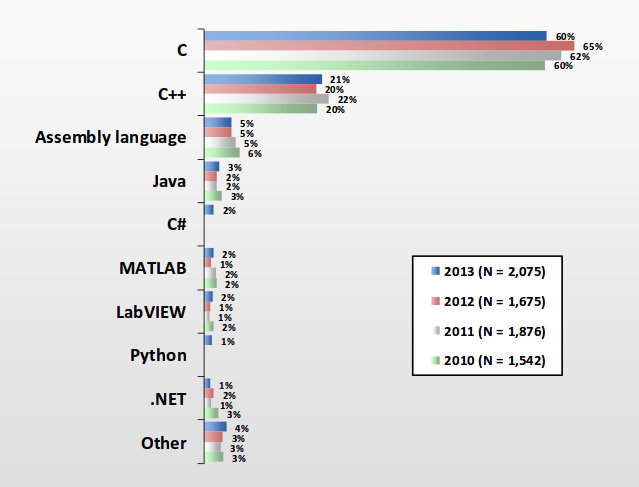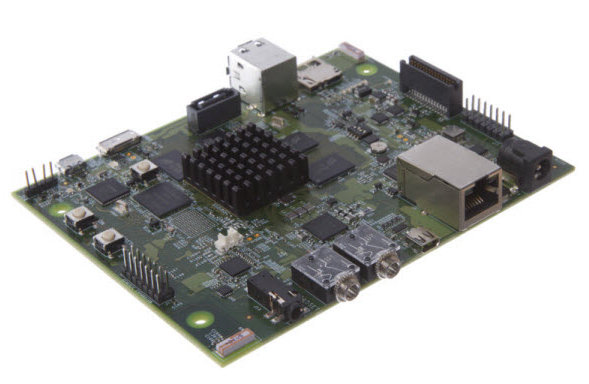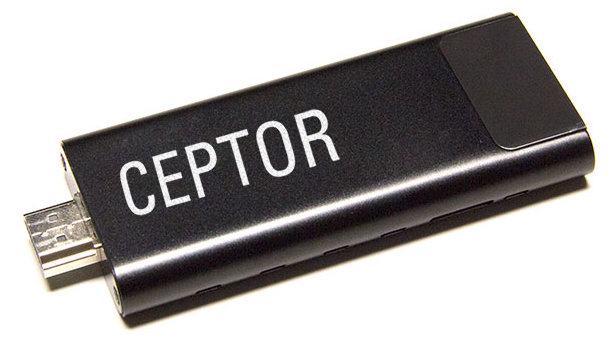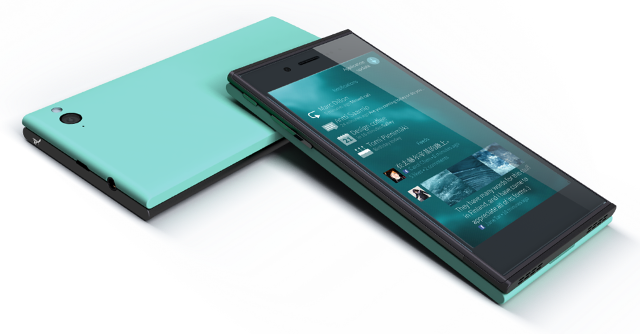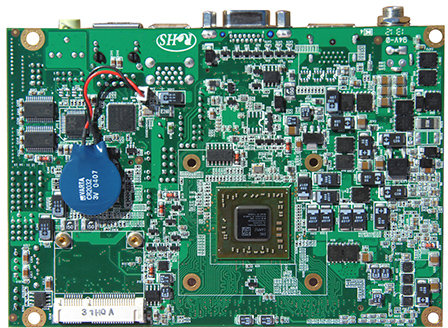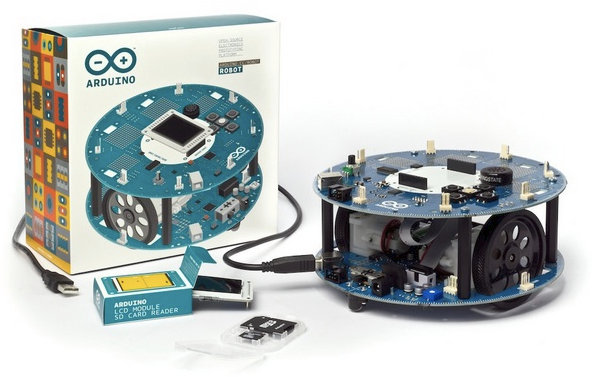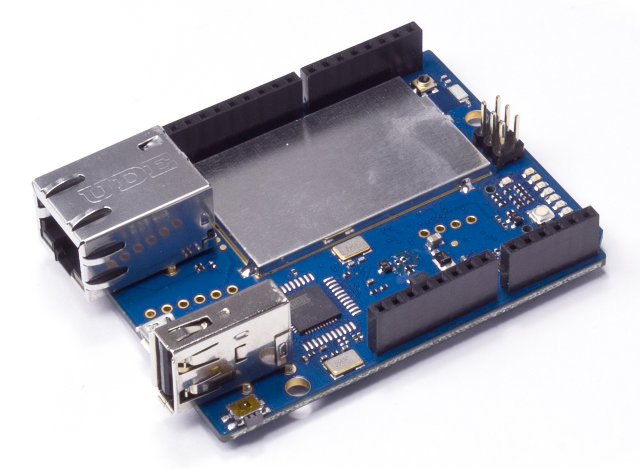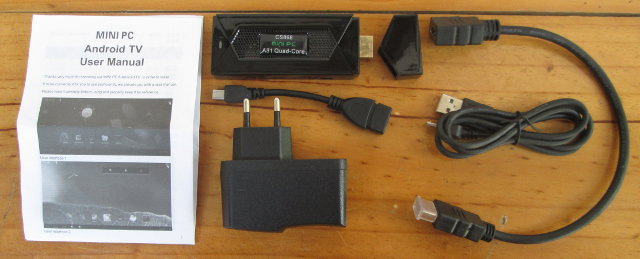UBM releases a study of the embedded market every year, by surveying over 1,000 embedded professional every year. They’ve just published their 2013 Embedded Market Study (85 pages report), after surveying over 2,000 engineers and managers, so let’s see whether anything has evolved in the software development and processor space compared to 2012. Again this year, most respondents are based in the US (62%), followed by Europe (20%), and Asia (12%). C/C++ languages still rule the embedded world with 81% market share, although a little less than last year (85%), assembler is a distant third (5%). Interestingly, the average size of development teams seems to have shrunk from 15.9 in 2012 to 14.6 in 2013, the average project being composed of 4 software engineers, 2.9 hardware engineers, 2.7 firmware engineers, 2 QA/Test engineers, 1.5 system integrators, and 1.5 with other functions. About a third of project last less than 6 […]
$329 Texas Instruments OMAP5432 EVM / Development Board
Earlier this month, Texas Instruments has apparently discreetly, not to say surreptitiously, launched their OMAP5432 evaluation module. Beside the dual Cortex A15, dual Cortex M4 OMAP5 SoC, the board comes with 2GB RAM, a 4GB eMMC module, USB 3.0, SATA and more. OMAP5432 EVM Specifications: SoC – Texas Instruments OMAP5432 Multicore ARM Cortex A15/M4 processor with PowerVR SGX544MP2 GPU System Memory – 2GB DDR3L (implemented using 4x Micron 4Gb DDR3L devices (MT41K256M16HA-125:E) Storage – 4GB EMMC/iNAND Ultra device + SD/MMC 4-bit Micro-SD card cage Display / Video: HDMI via native OMAP HDMI interface DSI Display Expansion (DSIPORTA and DSIPORTC) via 100-pin expansion connector Parallel Display Expansion (DPI) via 100-pin expansion connector Audio – Audio Jack 3.5mm, Stereo out & in, Headset Jack (earphone/microphone) USB – 3x USB HS 2.0 (2 via USB connector, one via 0.1″ header), 1x USB 3.0, and 1x USB OTG 2.0/3.0 Connectivity – 10/100 802.3u Ethernet. […]
Linux-based $99 Ceptor HDMI Stick Powered by Freescale i.MX 6Dual
Thanks to individuals developers, we’ve been able to get Linux distributions based on Ubuntu, or Debian run on HDMI TV dongles for about a year, but nearly all of them just come with Android and that’s it. The only two exceptions I can think of are PengPod Pengstick and FXI Technologies Cotton Candy, where actively work on Ubuntu support, and provide images to boot from microSD. But now, Devon IT has developed a mini PC, called Ceptor powered by Freescale i.MX 6Dual processor with 1GB RAM, and up to 32GB Flash. It runs Linux-based ZeTOS operating system, and is destined at creating virtual desktop solutions for the enterprise. The casing just looks like HiaPad Hi802 or Zealz GK802 , but the internal specifications are slightly different: SoC – Freescale i.MX 6Dual @ 1 GHz + Vivance GC2000 GPU System Memory – 512MB or 1GB DDR3 Storage – up to 32GB eMMC […]
The First Jolla Phone Running SailFish OS is Now Available for Pre-order
After a teaser tweet in July 2012, Jolla officially announced Sailfish OS in November 2012, and today, they’ll announce the first Jolla Smartphone, which is available for pre-order. Key features of the Jolla smartphone: SoC – Dual core processor Storage – 16GB Flash + microSD Display – 4.5” Estrade display Camera – 8MP auto-focus rear camera Network – 4G Battery – User-replaceable battery The device will run gesture based Sailfish OS, and you’ll be able to run Android apps. For a closer look, have a look at the teaser video. One caveat if that the smartphone should only be available at the end of 2013, and, at the beginning at least, only in Europe. The phone will cost 399 Euros including (24%) VAT, but you can pre-order today via 3 options: 100 Euros voucher – Jolla phone + other half (apparently a customizable shell) + priority pre-order status 40 Euros […]
Win Enterprises MB-60830 Single Board Computer Powered by AMD Embedded G-Series SoC
At the end of last month, AMD announced their first Embedded SoC family that combines a CPU, a GPU, and a controller hub into one chipset. Win Enterprises is one of the first companies to release a board based on the platform with MB-60830, a single board computer powered by AMD G-Series dual core or quad core SoCs. The board is designed for embedded applications such as digital signage, gaming, medical imaging, kiosks/POS, thin client and factory automation. The board specifications are as follows: SoC – AMD Embedded G-Series SoC dual or quad core. System Memory – 1x DDR3 @ 1600MHZ / SODIMM up to 4GB Storage – 1x SATA 6.0 Gb/s, 1x Half-size Mini-PCIe supporting mSATA for SSD Connectivity – Intel i211 AT Gigabit Ethernet Video Outputs: 1x VGA 1x dual channel 24-bit LVDS 1x HDMI with Optional Chrontel CEC Support Digital I/O – 8-bit programmable LPC – 1x […]
Arduino Unveils the Arduino Robot at Maker Faire
On top of announcing its first Linux powered board, Arduino also announced its first official robot at Maker Faire Bay Area called “Arduino Robot”. The robot comes with 2 wheels and two boards: The Motor Board controlling the motors. The Control Board reading sensors and deciding how to operate. Each board, based on Atmel ATmega32u4 MCU, is programmable like any other Arduino board using the Arduino IDE. Control board specifications: MCU – Atmel ATmega32u4 @ 16 MHz with 32KB flash, 2.5KB SRAM, and 1KB EEPROM External Storage – 512 Kbit EEPROM (I2C) + SD card reader for FAT16 formatted cards Display – Full color LCD over SPI communication I/O interfaces: 5x Digital I/O Pins 6x PWM Channels 4x Analog Input Channels (of the Digital I/O pins) 8x Analog Input Channels (multiplexed) Misc – 5 keys keypad, Knob potentiometer attached to analog pin, 8 Ohm speaker, digital compass “Playground” – 3x I2C […]
$69 Linux Powered Arduino Yún Board is Designed for the Cloud
Massimo Banzi announced the Arduino Yún, the first of a family of Wi-Fi products combining Arduino with Linux, at the Maker Faire Bay Area. The company used the name Yún (云), meaning “cloud” in Chinese, as the purpose of this board to allow connection to web services directly from Arduino. Arduino Yun Specifications: MCU – Atmel ATMega32u4 @ 16 MHz (same as the one used in Leonardo board) with 2.5KB SRAM and 32KB flash SoC – Atheros AR9331 MIPS-based Wi-Fi SoC running Linino, Arduino’s own Linux distribution based on OpenWRT. It’s the same chipset as in TP-Link WR703N router. Storage – microSD card slot USB – micro USB connector + full USB host port Connectivity – Ethernet + Wi-Fi 14 digital input/output pins (of which 7 can be used as PWM outputs and 12 as analog inputs) Arduino Yún ATMega32u4 can be programmed as a standard Arduino board by plugging it […]
Review of Kimdecent CS868 mini PC Powered by AllWinner A31
Kimdecent sells some cheap RK3188 mini PCs such as QC802 for $76, but instead of sending me yet another RK3188 device, they agreed to send CS868, an HDMI TV dongle powered by AllWinner A31 quad core processor, so that I could review it. This mini PC comes with 2GB RAM and 16GB Flash, the latter being larger than the 8GB flash found in most other devices, and is available for $95 on Kimdecent Aliexpress store. More details about the specifications are available on Unuiga U28 post since the hardware is the same. In theory, AllWinner A31 has a much slower CPU than Rockchip RK3188, but its PowerVR 544MP2 GPU should outperform the Mali-400 MP4 found it the Rockchip processor, and A31 supports 4K2K video decoding. In this post, I’ll show some unboxing picture, give my first impressions, test Wi-Fi performance, video playback capabilities, and run some benchmarks. CS868 Unboxing Pictures […]


